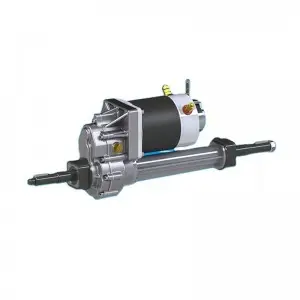Whether you’re a car enthusiast or just curious about how your vehicle works, it’s crucial to understand the inner workings of the transaxle and its components. One element that particularly piques curiosity is the differential. In this blog, we’ll explore the relationship between the transaxle and differential, diving into their complex functions and how they work together to transfer power and keep your vehicle running smoothly. After reading this article, you will have a clear understanding of whether a transaxle contains a differential. So, let’s roll up our sleeves and explore the transaxle differential connection!
Explain transaxle
Before we get into the relationship between a transaxle and a differential, let’s give a brief overview of what a transaxle actually is. The transaxle is an essential mechanical component in many front-wheel drive and all-wheel drive vehicles. It combines a transmission (which transfers power from the engine to the wheels) with a differential (which distributes power to the wheels). This integration eliminates the need for two separate components, simplifying the drivetrain and improving the vehicle’s overall efficiency. So, in simple terms, the transaxle is like the heart that regulates the distribution of power in a vehicle’s drivetrain.
Understanding the differences
Now that we have a basic understanding of the transaxle, let’s demystify the differential. Simply put, a differential is a gearbox-like device that allows a vehicle’s wheels to spin at different speeds while still receiving power. This is crucial when cornering, as the outer wheel on a curved path needs to travel a greater distance than the inner wheel. The differential allows the wheels to rotate independently, compensating for differences in distance traveled. By doing this, you prevent unnecessary stress on the wheels and promote smoother handling. However, the question remains: does the transaxle contain a differential?
Transaxle differential connection
Yes, the transaxle does contain a differential. As mentioned before, a transaxle combines the transmission and differential into a single unit, effectively integrating their functions. However, it’s worth noting that not all vehicles come with a transaxle. Rear-wheel drive vehicles typically have the transmission and differential as separate components, located at either end of the vehicle. In contrast, front-wheel drive and all-wheel drive vehicles are more likely to use a transaxle.
Integrating the differential into the transaxle optimizes space utilization and weight distribution. In addition, it simplifies the drivetrain layout, making it more compact and efficient. In addition, the combined unit provides better traction control and stability, especially in all-wheel drive vehicles, as the distribution of power between the wheels can be effectively managed.
Anyway, the transaxle does contain a differential. This critical component allows the vehicle’s wheels to spin at different speeds while still receiving power, ensuring smooth handling and extending the life of the driveline. By merging the transmission and differential into a single unit, the transaxle optimizes space utilization and weight distribution, resulting in more efficient vehicle operation. So the next time you admire a front-wheel drive or all-wheel drive vehicle, remember the critical role the transaxle plays in distributing power to the wheels, while the differential ensures seamless cornering and stable traction.
Post time: Oct-23-2023


